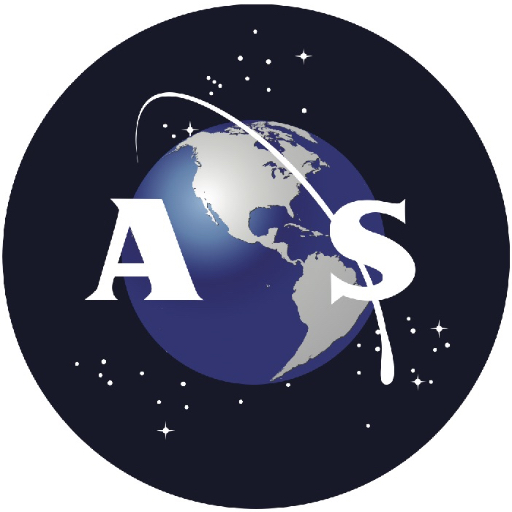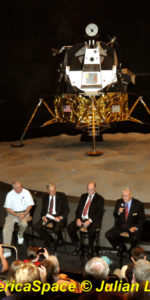
Space shuttle Discovery, the most flown reusable manned spacecraft is history, is now a museum piece – put on permanent public display as the centerpiece of the Smithsonian National Air and Space Museum, Stephen F. Udvar-Hazy Center in Chantilly, VA. Discovery replaced NASA’s prototype shuttle Enterprise, which has been on display since 2003. Enterprise will fly atop a NASA 747 shuttle carrier aircraft to New York City next week; the vehicle that paved the way for the shuttle program to carry out operational spaceflights will go on display at the Intrepid Sea, Air and Space Museum.
Ownership of Discovery was officially transferred from NASA to the Smithsonian National Air and Space Museum during the ‘Welcome Discovery’ ceremonies Wednesday, April 19th.

“Discovery has distinguished itself as the champion of America’s shuttle fleet. In its new home, it will shine as an American icon, educating and inspiring people of all ages for generations to come,” said National Air and Space Museum Director, General John “Jack” Dailey. “The Museum is committed to teaching and inspiring youngsters, so that they will climb the ladder of academic success and choose professions that will help America be competitive and successful in the world of tomorrow.”
The ceremony was attended by many NASA astronauts who flew on Discovery during her storied career as the most flown orbiter of NASA’s shuttle fleet. NASA Administrator Charles Bolden, KSC Director Bob Cabana, NASA’s first female commander Eileen Collins – who commanded Discovery’s return-to-flight mission after the tragic loss of Columbia, and John Glenn – who was the first American to orbit the Earth 50 years ago and also flew on Discovery in 1998, all attended the event to welcome Discovery to her new home.

“Space shuttle Discovery is the star, it has the most extensive record of all the shuttle fleet. The unfortunate decision made 8.5 years ago to terminate the shuttle fleet, in my view, prematurely grounded Discovery and delayed our research,” said John Glenn in a speech during the ceremony. “But those decisions have been made, and we’ll recover, and now we move on with new programs and possibilities unlimited. Today Discovery takes on a new mission, less dynamic perhaps, but nonetheless important. She will be on display not only as a testament to the events of our time, but also as an inspiration to future generations – a symbol for our nation of spaceflight that presents optimism and hope, challenge and leadership, and aspiration to explore and to excel. As our knowledge of the universe in which we live in increases, may god grant us the wisdom and guidance to use it wisely.”
“While we look back at Discovery’s amazing legacy, I also want to look forward to what she and the shuttle fleet helped to make possible,” said NASA Administrator Charles Bolden. “As NASA transfers the shuttle orbiters to museums across the country, we are embarked on an exciting new space exploration journey. Relying on American ingenuity and know-how, NASA is partnering with private industry to provide crew and cargo transportation to the International Space Station, while developing the most powerful rocket ever built to take the nation farther than ever before into the solar system.”

Discovery will undoubtedly be visited by millions of people in the coming years. It is NASA’s hope, as well as the Smithsonian’s, that Discovery will continue to educate and inspire the next generation of explorers, scientists, and engineers – the thousands of children who visit the National Air and Space Museum annually.
Discovery flew a total of 39 missions during a career which spanned 27 years from her first spaceflight to her last. The orbiter spent 365 days in space and travelled over 148 million miles, doing so at a speed 12 times faster than a bullet fired from an assault rifle. The orbiter carried out still secret Department of Defense missions, put the Hubble Space Telescope and other various satellites into orbit, and flew both of NASA’s ‘Return To Flight’ missions after the Challenger and Columbia disasters. Discovery was also the first orbiter to dock with the International Space Station.
Space shuttle Endeavour, considered the baby of NASA’s shuttle fleet, will make her trip from Kennedy Space Center to Los Angeles this coming fall where she will go on permanent public display as a museum piece at the California Science Center. Atlantis will remain at Kennedy Space Center, going on display early next year at a new $100 million exhibit at the Kennedy Space Center Visitor Complex.
BELOW: Gallery of images taken by Mark Usciak, who was on hand to welcome Discovery to the Smithsonian National Air and Space Museum for Americaspace. Mark has been privileged to cover the shuttle program, and Discovery’s life, since the beginning. It was only fitting that he be there to cover the end.
All Photos Credit: Mark Usciak

















I don’t think people around this country realize the impact these shuttles made on their home, Brevard County. It may not be the most beautiful or exciting place but the space program made it something. Everyone who lived close enough to KSC to have their windows or garage doors shake on each launch has been effected by this programing ending. I live close enough to be able to walk out my front door, look in the sky and see a beautiful launch. It’s a little selfish but I hated to see Discovery go.